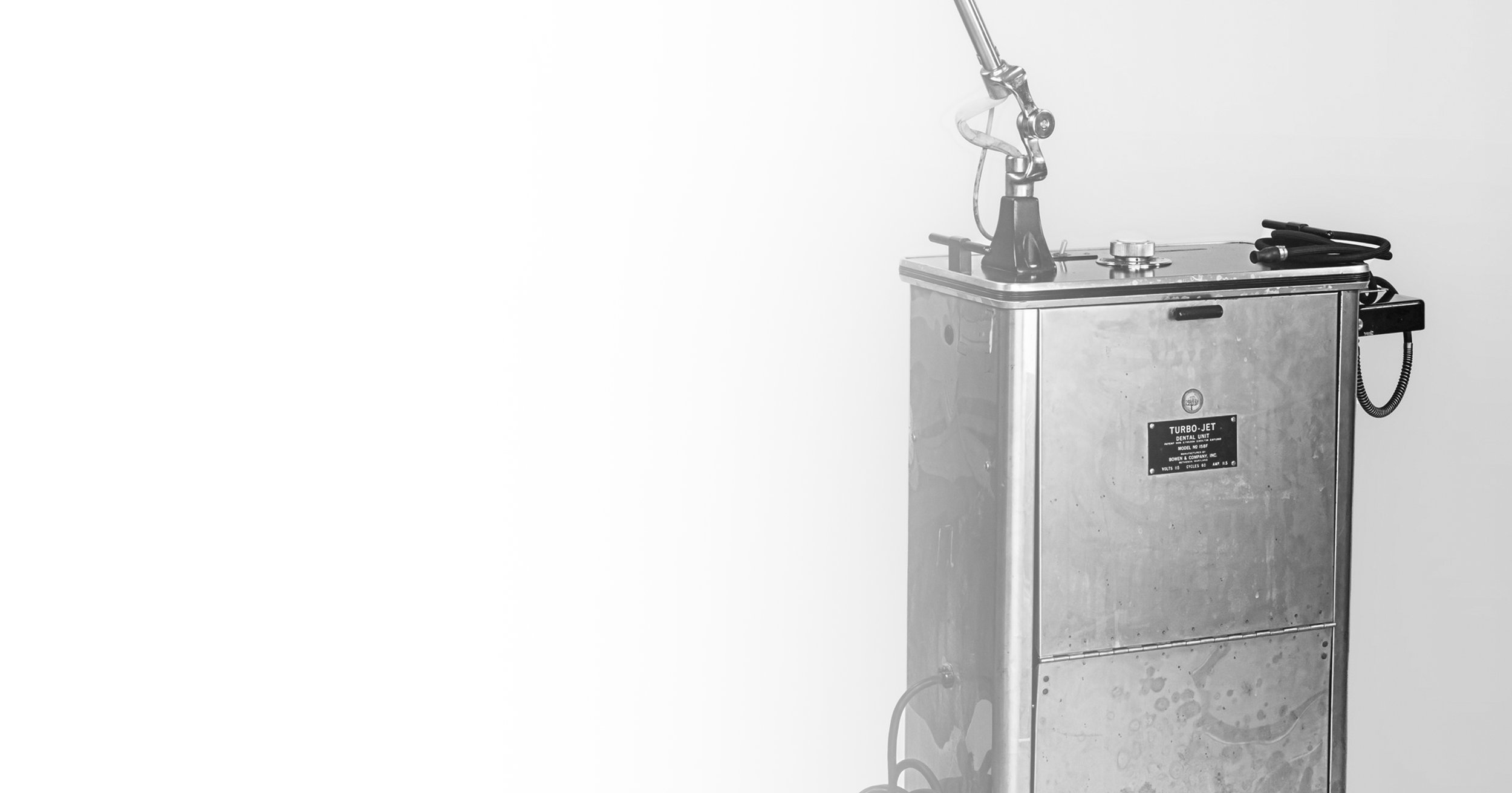
HOME > ALL DISPLAYS > 1950-1970 > TURBO-JET MOBILE UNIT

Turbo-Jet Mobile Unit
Circa 1952 | Object #: 0261.0001
Electrified dental engines of the 1920s transformed the dentist’s ability to effectively remove and fill cavities, but the slow speed and high vibrations of these drills were still lacking.
The development of jet turbines after WWII eventually found its way to the dental profession. The Turbo-Jet water-driven unit was the first sustainable use of the turbine principle in a handpiece. A portion of the drive water recirculated and it water-cooled the tooth and bur. It had the highest torque of any turbine angle handpiece, and lacking vibration, it was considered superior in regard to all other instruments available at the time.
